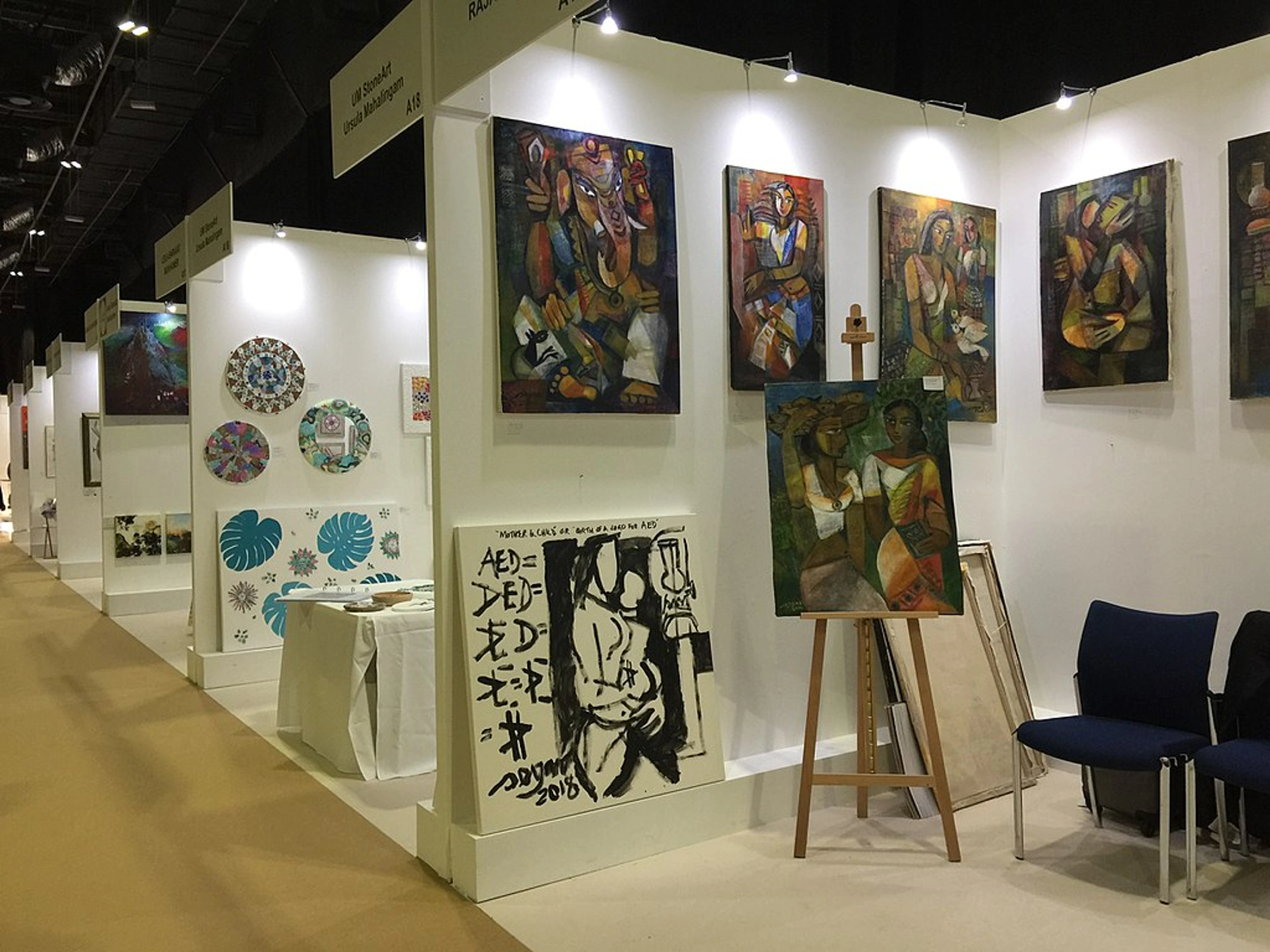
Unlocking Gallery Representation: An Artist's Candid Guide
A candid guide for emerging artists seeking gallery representation. Learn practical strategies for portfolio, online presence, networking, and engaging gallerists with personal insights and humor. Covers contracts, commissions, and finding the right fit.
Unlocking Gallery Representation: An Artist's Candid Guide for Emerging Artists
I’ve poured my soul into a significant body of work, and often, after that intense creative period, a common question emerges: "What next?" It’s a moment of delightful exhaustion, but also a cliff edge of uncertainty, isn't it? The idea of sharing art beyond the studio walls is both exhilarating and, for many of us, a little daunting. The quest for gallery representation, while challenging, is incredibly rewarding. A gallery isn't just a place to display art; it serves as a profound validation, a professional advocate, and a bridge to a broader audience and serious collectors. This guide, compiled from my own observations and experiences within the art world—including a few missteps I’ll confess to along the way—offers a practical roadmap to successfully navigate this often-mystifying ecosystem and, hopefully, captivate gallerists. I’ll share insights into meticulous portfolio creation, strategic networking (yes, even for introverts like me), and the nuanced approach required to engage galleries effectively. Let’s delve into the essential strategies, and remember, you’ve got this.
Crafting an Impeccable Portfolio: Your Visual Voice, Professionally Presented
Your portfolio is, without a doubt, your most vital tool. It functions as your art's visual voice, a tangible testament to your capabilities and artistic identity. I’ve often observed portfolios that are artistically compelling but poorly presented, or conversely, clinically perfect yet lacking a distinctive artistic soul. The optimal balance lies in art that truly speaks volumes, presented with impeccable professionalism that authentically reflects a unique perspective. It is this delicate equilibrium where impactful connections are forged. And, honestly, this is where you can either make a gallerist lean in or click away in seconds. So, let’s get it right.
The Digital Portfolio: Your First Impression, Optimized for Experience
In today's digital age, an online portfolio is almost always the first point of contact. This involves more than just having pictures; it demands presentation and a seamless user experience (UX): a clean design, intuitive navigation, and professional photography. High-resolution images, captured with consistent lighting and accurate color representation against a neutral background, are non-negotiable. Gallerists or collectors will often click away from a slow-loading website, because, let’s be real, time is precious. Optimizing images for web loading speed, without sacrificing quality, is a crucial detail that demands attention. This means utilizing tools like TinyPNG or opting for .webp or optimized .jpeg formats, and consistently naming files (e.g., ArtistName_ArtworkTitle_Year.jpg). Crucially, ensuring consistent image resolution and color profiles across all digital representations reflects subtle professionalism that makes a huge difference. Each artwork should be clearly titled, with its medium, dimensions, and year of creation noted. And hey, make sure your site is accessible – think about visually impaired users who might rely on screen readers. A little extra effort here ensures everyone can appreciate your work.
Beyond just speed and clarity, I like to consider the user journey on my site. Are there clear calls to action? Do I want visitors to contact me for inquiries, view available works, or sign up for a newsletter? Guiding them is essential. A dedicated "About Me" or "Artist Bio" page is distinct from an artist statement. This section should narrate your professional journey, highlighting career milestones, education, exhibitions, residencies, and awards, effectively presenting your professional story. A comprehensive CV or résumé, separate from the artist statement, should also be readily available, detailing exhibition history, education, awards, and professional affiliations, providing crucial context for gallerists. Additionally, a clear and easily accessible "Contact" page with direct inquiry options (email, contact form) and perhaps even social media links is indispensable. Ensure the site is mobile-responsive, as many gallerists and collectors will initially view work on their phones; a clunky mobile experience is an instant deterrent.
And let's not forget SEO. For discoverability, I always ponder what someone might search for to find my art. What keywords resonate with my style and subject matter? Incorporating these naturally into the website's text, image alt tags, and meta descriptions is like making sure your art is findable in the vast digital jungle. A well-optimized site means more eyes on the work, which is, after all, the entire point of a digital portfolio. After all, if they can't find you, how can they fall in love with your work?
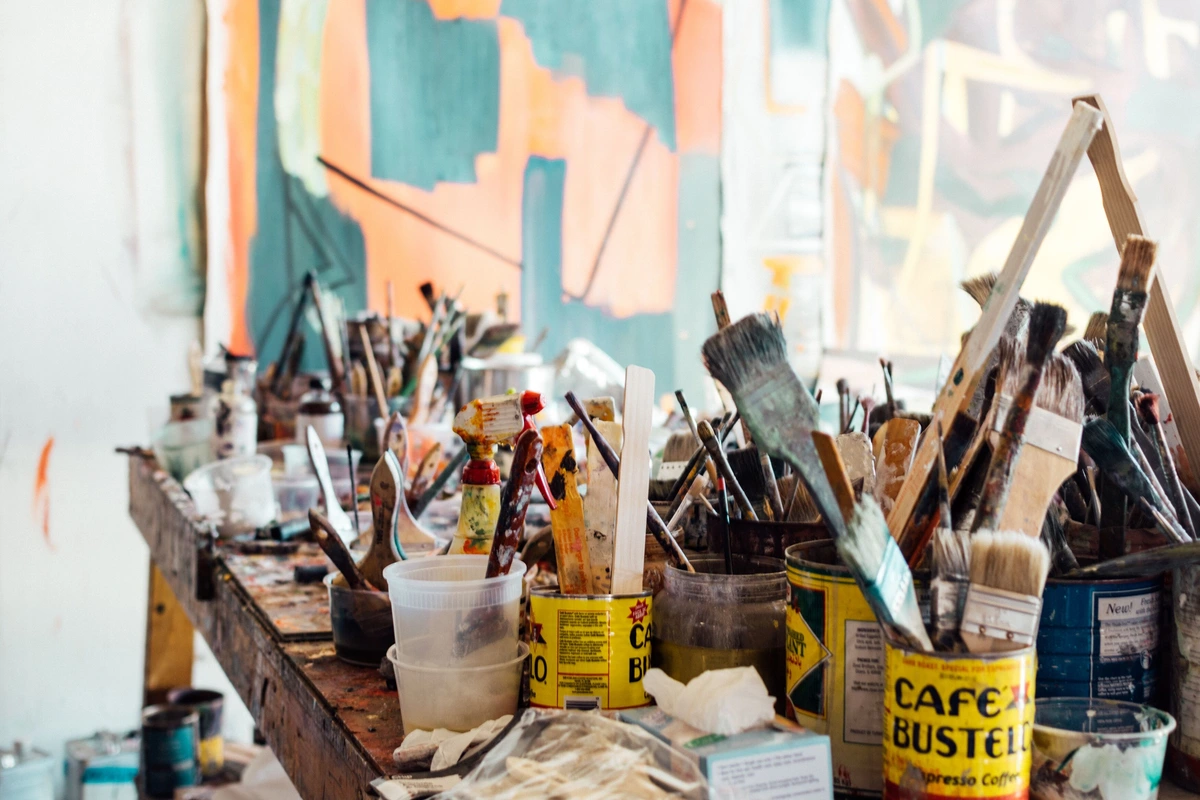
Quality and Consistency are Paramount
What gallerists universally seek is a distinctive artistic voice and a cohesive body of work. Your portfolio should showcase your strongest pieces, demonstrating a consistent aesthetic and conceptual thread. Presenting a focused series, rather than a disparate collection of experiments, communicates a clear vision and a commitment to a particular direction. Such intentionality profoundly resonates, showing an artist is not merely creating, but actively building something meaningful.
To identify a cohesive body of work, especially if you feel your art is varied, I’ve found it helpful to look for common threads—recurrent color palettes, textures, or symbols. Creating mood boards with existing work or writing short thematic statements for groups of paintings can often reveal an underlying connection previously missed. It's akin to discovering the secret language your work already speaks, like finding the hidden pattern in a complex piece of music.
Beyond the artwork itself, the presentation of the portfolio pieces is crucial. Consistent framing, hanging, or digital display methods contribute to an overall professional aesthetic. Imagine a curator viewing a portfolio where each piece is presented differently; that lack of uniformity can unfortunately detract from the art itself. A consistent presentation underscores your professionalism and attention to detail, reinforcing the cohesive nature of your output. Moreover, ensuring the artist statement consistently aligns with the visual work in the portfolio is critical; it reinforces a unified artistic voice and conceptual clarity. Remember, a gallerist's time is precious, so make it easy for them to see your brilliance.
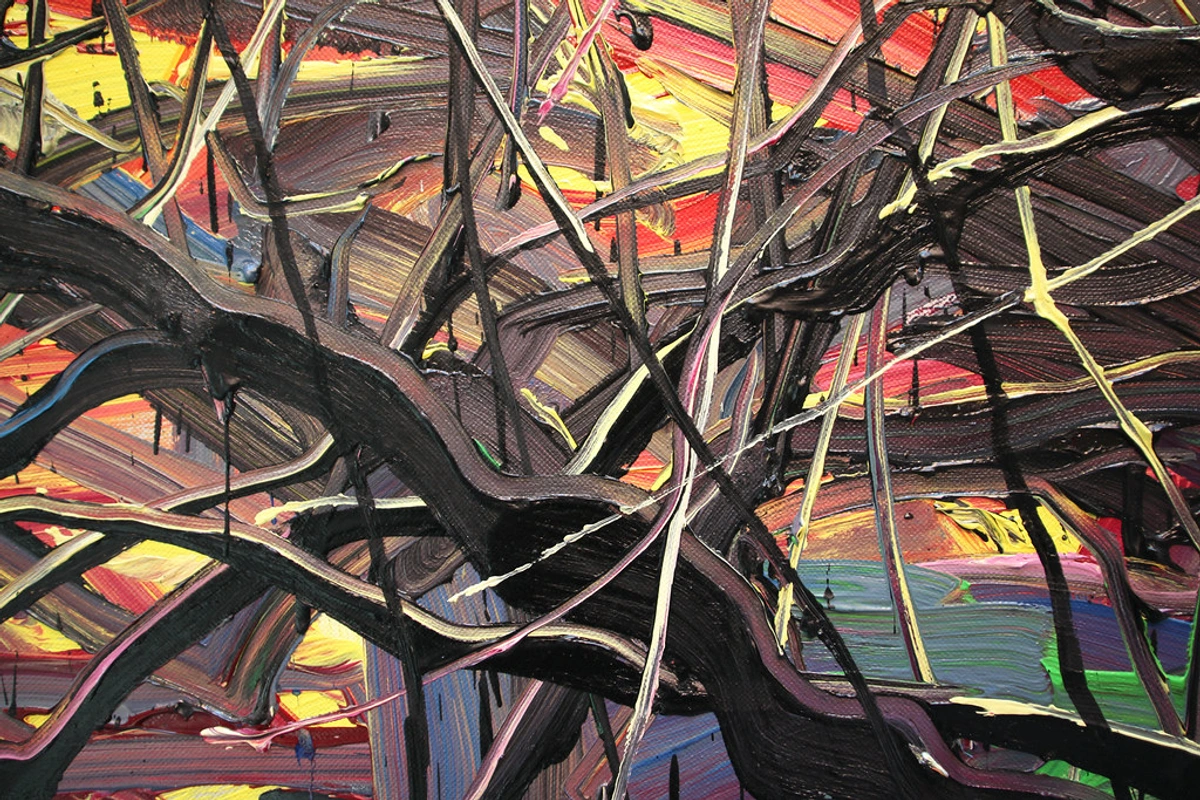
Documenting the Creative Process: Showing Your Journey
Beyond the finished pieces, demonstrating the creative journey can be surprisingly compelling. Including documentation of the artistic process—such as initial sketches, studies, or even works-in-progress—offers gallerists a unique window into your development and thought process. It’s not about showcasing perfection; it's about revealing the dedication and evolution behind the final artwork. This approach invites gallerists into your studio, allowing them to see the beautiful mess that often precedes a masterpiece. It tells a story beyond just the canvas, a narrative of effort and intention. I've found that time-lapse videos of a painting coming to life, studio vlogs explaining choices, or detailed process photos can be incredibly effective in showing this journey. Consider having a dedicated "Process" page on your website or a well-organized PDF within your portfolio for these fascinating glimpses behind the scenes.
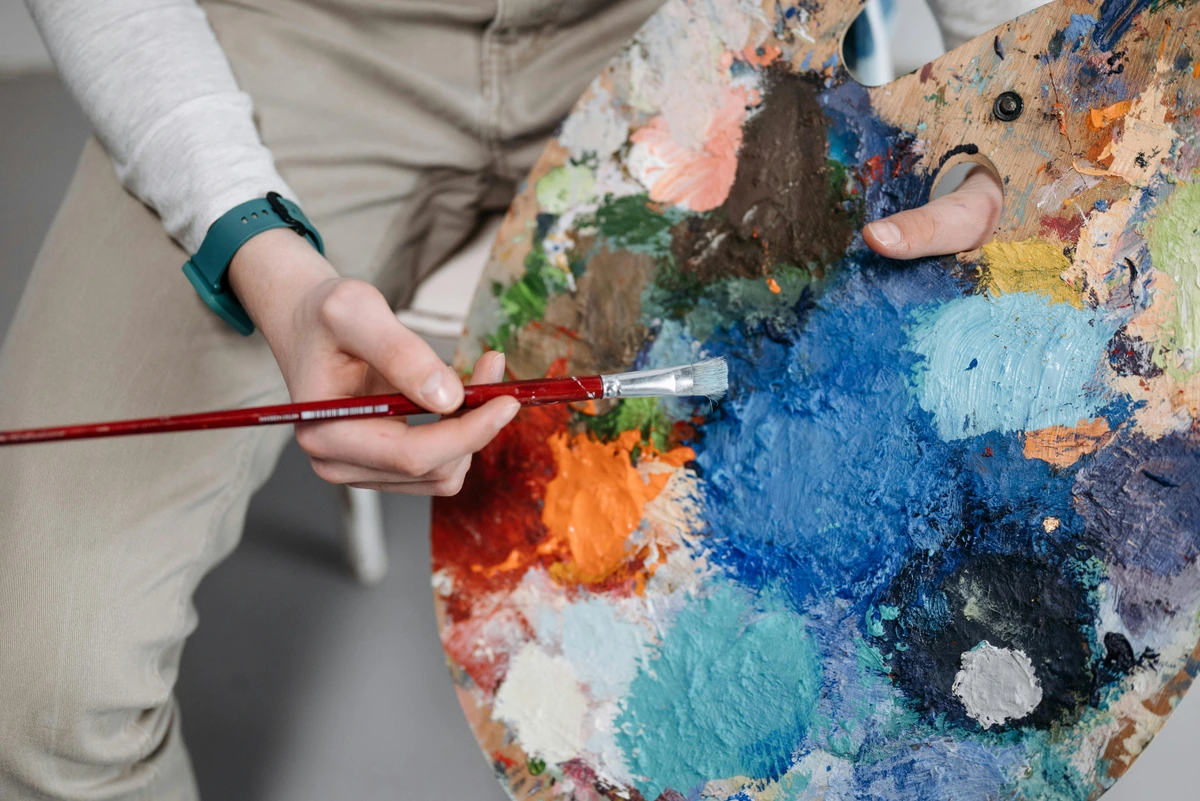
The Importance of Scale in Abstract Art
For abstract artists, the scale of their work is often as much a part of its message as the colors or forms themselves. How do you present a monumental canvas versus an intimate study? Presenting works across a sensible range of sizes, and explaining the intention behind each, can demonstrate versatility and thoughtfulness. A photograph of a large piece installed in a room (even a professionally staged corner of your own studio works wonders) provides crucial context, showing how your art interacts with space. For smaller works, photograph them with the same meticulous care, perhaps with a consistent, neutral object for scale reference. This demonstrates an understanding of how art interacts with space, a crucial consideration for any gallery. It’s like showing them not just a painting, but how that painting lives in the world.
Artist Statement: Finding a Distinct Voice (and Not Sounding Like a Robot)
Ah, the artist statement. The bane of many an artist's existence, right? It feels like trying to bottle lightning, or perhaps explain a dream you had – the essence is there, but the words just don't quite capture it. Beyond the visuals, a well-crafted artist statement acts as the narrative companion to your work, offering context and insight into your artistic journey. Early attempts often read more like academic theses than authentic expressions of artistic intent. Trust me, I’ve been there, writing sentences so convoluted they’d make a philosophy professor blush. The key is to keep it concise, authentic, and compelling. It should speak to your inspirations, process, unique philosophy, and core themes, creating a vital connection between what the viewer sees and what you, the artist, intend. It is a brief, heartfelt conversation about the art, explaining why it is made. Avoid jargon unless it's absolutely necessary and you can explain it simply. Instead of "exploring the liminal spaces of post-modern semiotics," try "I’m fascinated by the blurry lines between reality and memory." If you have significant art education or training, a brief mention can add credibility, showcasing a foundational commitment to your craft. It’s also prudent to tailor a statement slightly for different submission contexts while maintaining its core authenticity. For a gallery, the emphasis might be on market relevance and artistic vision, whereas for a grant application, the focus could shift to conceptual depth and community impact. When describing work in different mediums, say a kinetic sculpture versus a painting, I focus on the experiential impact or the underlying conceptual thread that ties them together, rather than just technical specifics. Here's a simple framework I’ve found to be incredibly helpful:
- Headline: Your name, medium, and a powerful descriptor (e.g., "An Abstract Expressionist Explorer of Color," "A Lyrical Architect of Light and Shadow," or "A Tactile Sculptor of Dynamic Fields").
- Paragraph 1 (The Hook): What drives your practice? Your core inspiration or burning question. What problem are you trying to solve with your art?
- Paragraph 2 (The Process): How is the art made? Materials, techniques, specific methods. Give a peek into your unique alchemy.
- Paragraph 3 (The Meaning): What are the central themes, ideas, or emotions the work explores? What do you hope viewers take away? What impact do you want your art to have?
- Closing Sentence: A strong, memorable thought about your overall artistic vision. Leave them with something to chew on.
Considering Prints for a Portfolio
For artists who also work with prints, including examples of high-quality, archival printmaking techniques can demonstrate versatility and market potential. It's essential to highlight the quality and longevity of such works, as these details are important to both gallerists and collectors. This not only shows a thoughtful approach to diverse artistic output but also demonstrates an understanding of different market segments and revenue streams, which is a definite advantage. It's about showing you're not just an artist, but a savvy professional too.
Cultivating a Professional Online Presence: Beyond the Canvas and Into the Digital Realm
Once a compelling portfolio is ready, the next step is ensuring it reaches its intended audience. Your broader online presence serves as a dynamic extension of your professional identity, providing additional avenues for discovery and engagement. A cohesive online presence signals professionalism and commitment, communicating to galleries that you are serious about your career. It's about consistently presenting a unified brand and message across platforms, reflecting your best self as an artist. Think of it as your virtual storefront, always open, always presenting your curated best.
The Dedicated Artist Website: The Central Hub
A clean, easy-to-navigate personal website is the cornerstone of a professional online presence. It should act as the central hub for all information about you and your art, showcasing a curated selection of work, an artist statement, a comprehensive biography, and clear contact information. As I mentioned, the "About Me" or "Artist Bio" page is crucial for narrating your journey and accomplishments. A well-maintained website also subtly indicates business acumen. Galleries seek not only great art but also artists who understand the professional and business aspects of their career. The ability to present oneself professionally and manage practical aspects, such as the potential to sell your art directly, are factors gallerists definitely consider. It shows you are not just a creator, but also a professional who knows how to navigate the modern art world.
Strategic Social Media Engagement: Your Virtual Open Studio
While not always a direct path to representation, strategic use of visual social media platforms like Instagram can significantly raise your profile. I encourage artists to leverage these platforms to share glimpses into their creative process, studio life, and finished works, which helps build an engaged audience. Engagement should be meaningful, fostering connection rather than merely broadcasting. It's akin to a virtual open studio, inviting people into your world, without the need to clean up the paint splatters. For gallerists and collectors, specific content often resonates: behind-the-scenes studio shots, time-lapses of the painting process, close-ups of texture and detail, or short videos of the artist discussing their work. For abstract artists, demonstrating the layering of paint or the application of unique textures can be particularly captivating. And the power of hashtags should not be underestimated; for abstract artists, specific tags like #AbstractArt, #ContemporaryAbstract, #AbstractExpressionism, or #YourCityArt can significantly increase discoverability by interested collectors and gallerists. This demonstrates dedication and depth beyond just the final image, offering a deeper narrative.
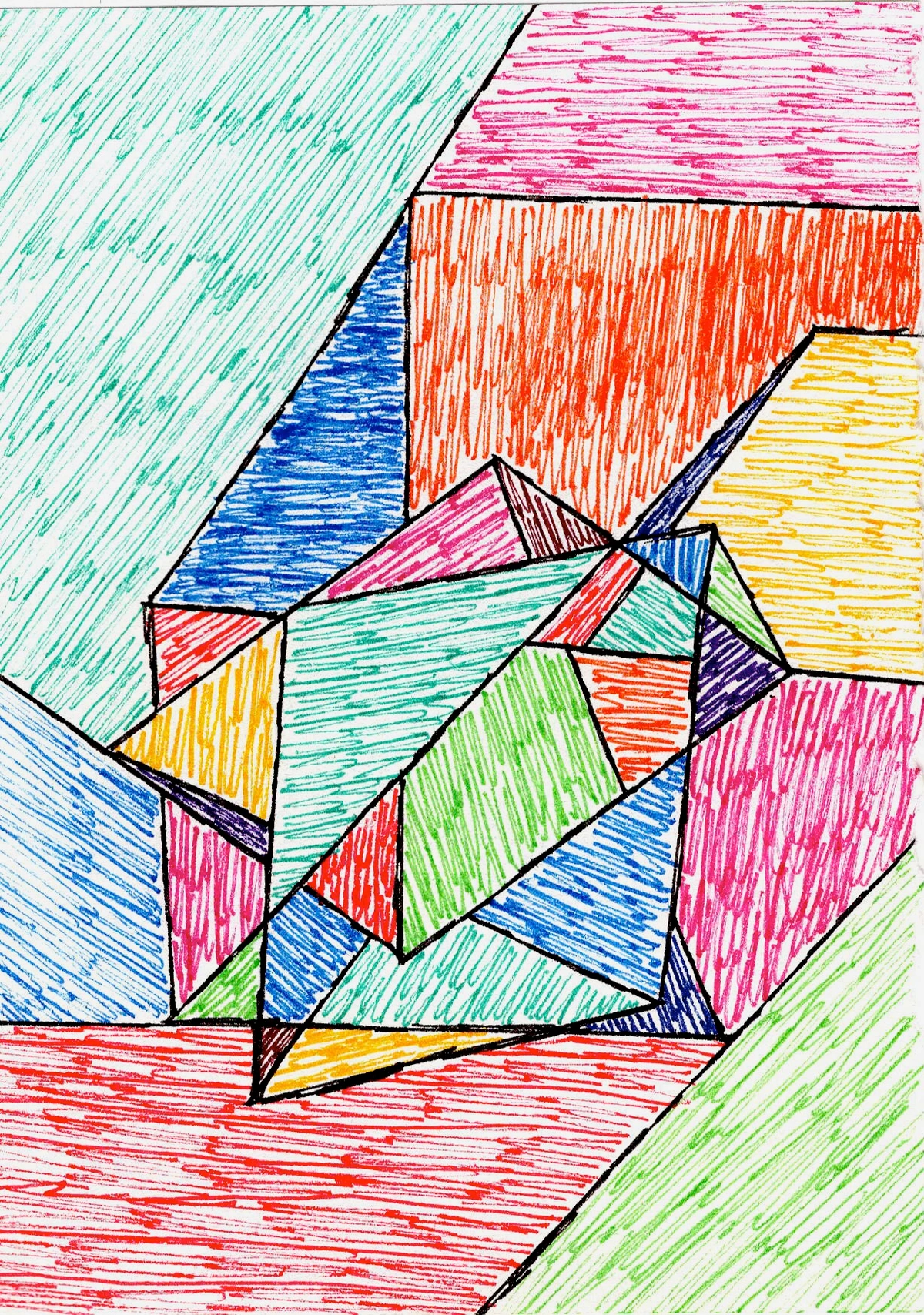
Exploring Online Art Marketplaces: An Additional Avenue
Online art marketplaces can offer additional visibility and sales opportunities, allowing artists to navigate the online art market. While these platforms can be beneficial, it's important to understand their role in conjunction with, rather than as a replacement for, traditional gallery representation. They represent another valuable tool in your professional kit, not the entirety of it. This brings up an important ethical consideration: if you are pursuing gallery representation, maintaining pricing consistency across all sales channels is paramount. Galleries will expect this. Undercutting gallery prices online, even inadvertently, can damage trust and professional standing. I often ponder what balance will best serve my long-term career goals. It’s a delicate dance, but one worth mastering to protect your professional reputation.
Networking: Building Bridges in the Art Community (Schmoozing with Purpose and a Smile)
So, you've got the art, you've got the website... but how do you actually meet the people who can champion your work? While a robust digital footprint is vital, the physical art world continues to thrive on relationships. Networking can often feel daunting for artists who prefer the quiet of the studio. Trust me, I used to feel like a deer in headlights at openings, clutching my drink and trying to look deeply contemplative. But I've learned a few tricks to avoid just staring blankly at the canapés. Active participation in the community is instrumental in making connections and understanding the ecosystem. This involves genuine engagement, often requiring us to overcome the initial awkwardness of meeting new people. The focus should always be on genuine curiosity and mutual respect. Think of it less as "networking" and more as "making friends who also happen to love art."
Gallery Openings and Events: Respectful Introductions and Research
Attending gallery openings is not only a way to support fellow artists but also an opportunity to experience how galleries display art for maximum impact and observe how to curate a gallery wall. Most importantly, it allows for respectful, face-to-face introductions with gallerists in a low-pressure environment. The aim should be to genuinely admire their program first, before any mention of your own work. Present yourself as a fan, not a salesperson, at least initially. A helpful tip: gallery staff (assistants, directors) are often the first point of contact and can be invaluable allies. Treating them with immense respect is paramount; they often hold the keys to many doors. Researching the gallery's represented artists before attending an opening is a pro move. It allows you to formulate more informed and genuine compliments or questions. I once had a slightly awkward but ultimately successful first encounter where I simply complimented a gallery assistant on their detailed knowledge of the featured artist's early work; it led to a brief, genuine conversation, and later, an opportunity for a proper introduction to the director. Specific, low-pressure conversation starters could include: "What drew you to this particular artist's work?" or "I'm interested in the curatorial decision to place these pieces together; could you share your insight?" It shows you're engaged, not just waiting for an opening.
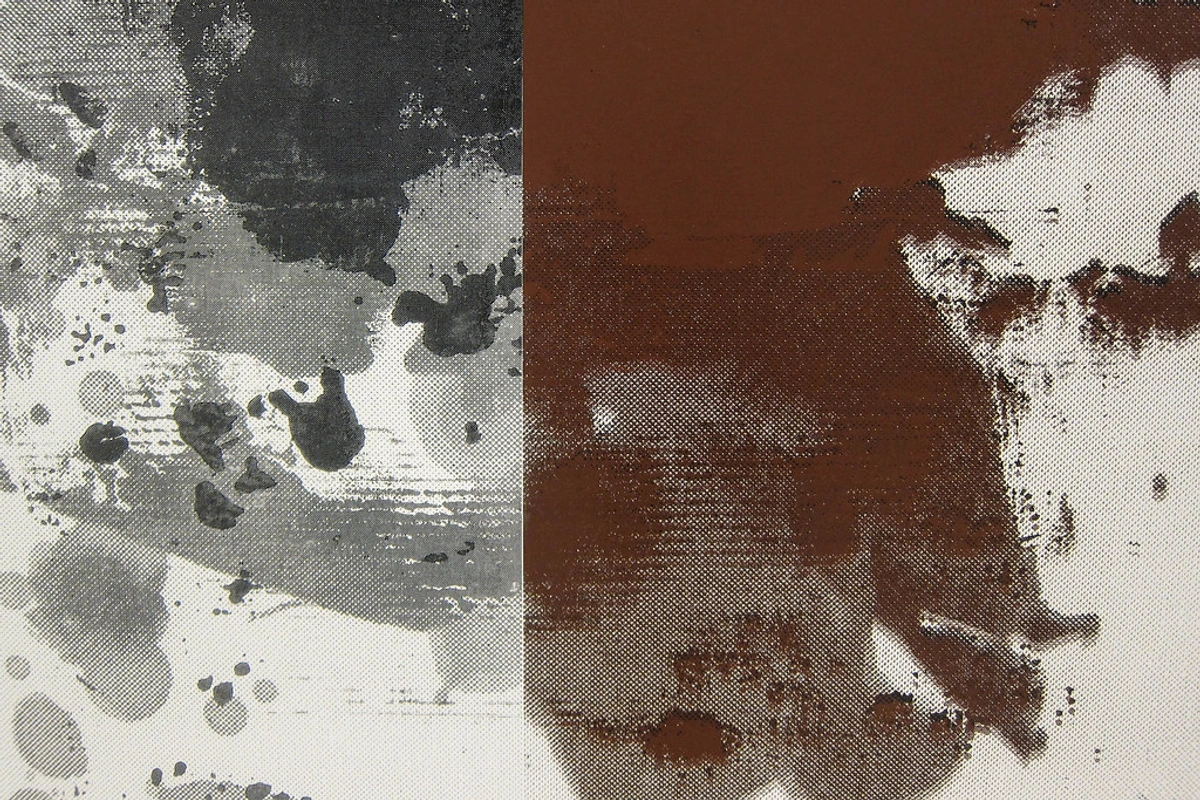
Engaging with Artist Communities & Residencies: Support Systems and Growth Catalysts
Joining local artist groups, attending open studios, or participating in online forums fosters a sense of community. These interactions can lead to peer critique, shared resources, and invaluable insights into navigating the art world. Many artists find helpful advice comes from fellow artists; it's like a supportive ecosystem for active participants. For abstract artists, I've found communities like Abstract Artist Collective or forums dedicated to contemporary painting techniques can be particularly insightful. Artist talks and lectures are also fantastic for gaining deeper insights into artistic practices and often foster more intellectual, meaningful connections than a bustling opening. You get to hear artists really talk about their process and philosophy—it's gold.
And you should not overlook artist residencies. These are not just for focused studio time, though that's a huge benefit. Residencies are incredible opportunities to connect deeply with other artists, curators, and local art professionals. The intense, shared experience often forges lasting bonds and can unexpectedly open doors to future exhibitions or collaborations. It’s a wonderful way to expand your network organically, away from the pressure of a formal pitch.
Beyond traditional galleries, artists should also consider alternative spaces and project spaces. These venues often offer more experimental opportunities, less rigid curatorial themes, and can be excellent platforms for emerging artists to gain exhibition experience and build their network before approaching more established commercial galleries. For instance, an artist whose work explores ephemeral installations or highly conceptual digital art might find these spaces more receptive than a gallery focused on traditional painting sales. These spaces frequently prioritize artistic innovation over commercial viability, offering unique pathways for artistic development.
Attending Art Fairs and Exhibitions: The Research Ground
Art fairs are prime opportunities for observation and informal networking. You can use them to identify galleries that represent work aligning with your own aesthetic and approach, and perhaps even those representing artists at a similar career stage to yours. Engaging respectfully with gallerists and their staff, collecting business cards, and noting exhibition styles can be invaluable. Observing market trends and what makes certain emerging abstract art collectible also offers insights into market dynamics. When engaging, prepare a few thoughtful questions, such as: "What draws you to this artist's work?" or "Are there specific themes you look for when curating?" This demonstrates diligence and genuine interest in the gallery's vision. These interactions offer insights that might inform your next move. For unrepresented artists, these fairs are less about direct sales (which can conflict with future gallery agreements) and more about strategic reconnaissance – observing, learning, and making those initial, soft connections.
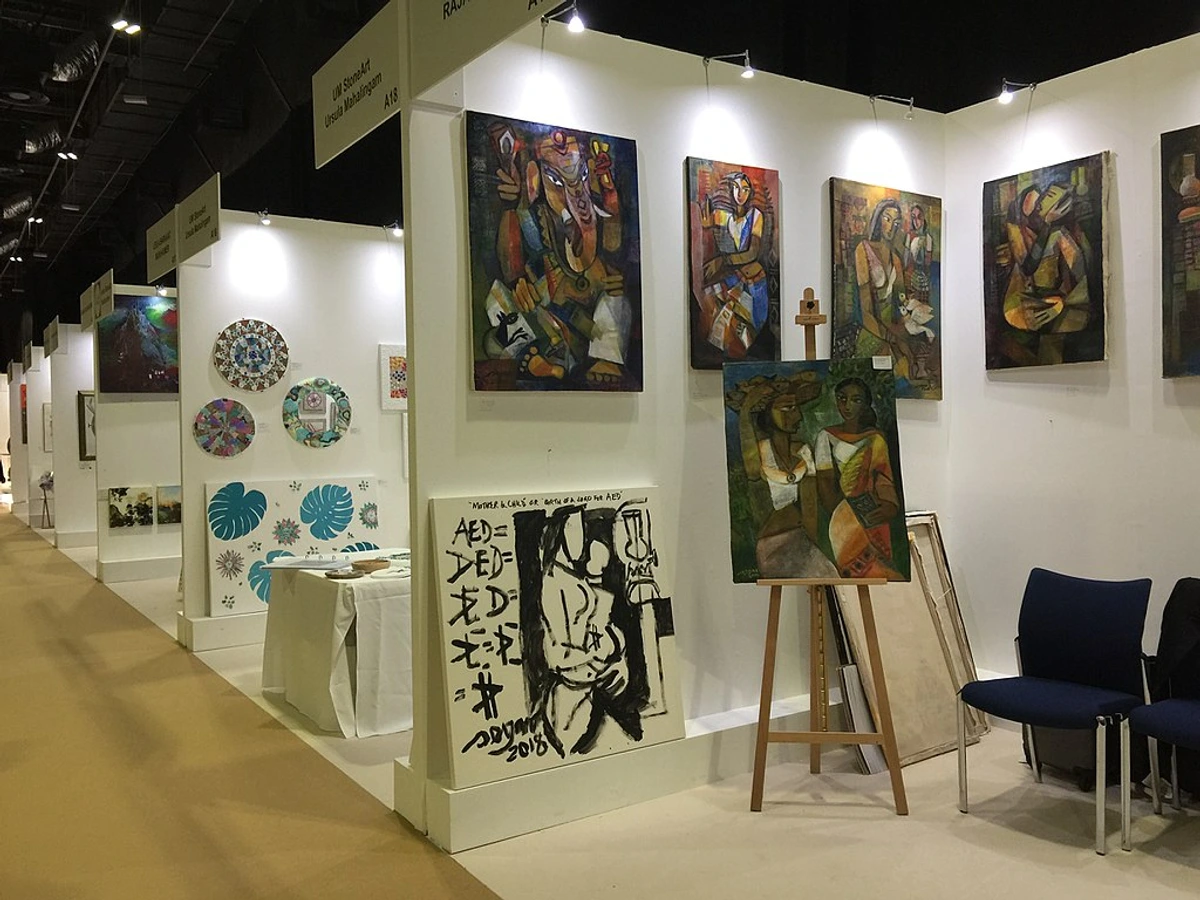
The Role of Art Consultants and Advisors: Navigating the Intermediaries
Art consultants, often perceived as an exclusive resource, are well-connected professionals who genuinely appreciate art and facilitate connections. They frequently work with collectors, linking them with artists whose work aligns with their taste. Building relationships with these professionals can open doors that might otherwise remain unseen. For emerging artists, while direct representation might be a stretch initially, some advisors specialize in scouting new talent and can offer invaluable early career guidance or introductions to smaller galleries. Consultants are often scouting for talent and can be invaluable advocates, but the relationship must be mutually beneficial and professional. To find them, research art publications, attend private viewing events, or look up professional art advisory associations. When approaching, clearly articulating your vision and providing a link to a polished digital portfolio is always appreciated, as they value efficiency as much as galleries do. Understanding this layer of the art world is crucial; they're like the matchmakers of the art world, and a good matchmaker is worth their weight in gold.
The Art of the Approach: Engaging Gallerists (with Finesse)
Once your portfolio is prepared and a network built, the next crucial step is the direct approach to galleries. This phase demands careful strategy and strict adherence to professional etiquette. Diligent research during this stage often proves invaluable. I’ve learned the hard way that sending abstract color fields to a gallery known for monochromatic realism rarely, if ever, ends well. Trust me, it’s like showing up to a black-tie event in pajamas – a definite faux pas, and a quick trip to the 'delete' folder. Don't be that artist. Your goal here is to make it easy for them to say 'yes.'
Understanding Gallery Types: Know Your Audience and Their Curators
Before initiating contact, you must understand the diverse landscape of art galleries. Different galleries have different expectations. There's a significant difference between commercial galleries (focused on sales), non-profit spaces (often experimental, community-focused), artist-run initiatives (collaborative, often emerging), and the aforementioned alternative or project spaces. Each has different expectations for submissions and artist relationships. The approach must be tailored accordingly. For instance, commercial galleries, such as Gagosian or David Zwirner, often have an established roster and might seek artists with a proven exhibition history. They might have a specific niche, whether it's specific abstract art movements or a particular regional focus. Emerging artists might find more initial success with artist-run spaces or non-profits, like MoMA PS1 or The Kitchen, that are more open to experimental or less established work. These venues prioritize artistic innovation over commercial viability, offering unique pathways for artistic development. Understanding which type of gallery aligns with your career stage is crucial; don't aim for the Guggenheim when a local co-op gallery might be your perfect first step.
It's also worth recognizing the influence of curators. Within galleries, curators are the visionaries who shape the exhibition program and artist roster. Understanding a curator's aesthetic preferences and thematic interests, if discernible through past shows or interviews, can further refine your targeting. Here’s a quick overview to keep in mind, including the ever-growing online galleries and hybrid models that have truly reshaped the landscape:
Gallery Type | Primary Focus | Artist Relationship | Submission Expectation |
|---|---|---|---|
| Commercial | Sales, market growth | Formal contract, exclusivity | Highly curated, professional, established aesthetic |
| Non-Profit | Cultural enrichment, community | Project-based, limited duration | Innovative, experimental, often theme-driven |
| Artist-Run | Collaboration, experimentation | Peer-to-peer, shared responsibility | Emerging, boundary-pushing, community-oriented |
| Alternative/Project Space | Experimental, process-focused | Flexible, often temporary | Conceptual, site-specific, non-commercial |
| Online Gallery/Platform | Global reach, accessibility, sales | Often non-exclusive, commission-based | Digital-first, diverse styles, clear presentation |
| Hybrid Model | Blends online & physical presence | Flexible, varied contracts | Digital presence important, often seeks physical opportunities |
Online galleries, for example, offer unparalleled global reach but might lack the physical presence many collectors still value, while hybrid models try to capture the best of both worlds. Understanding these nuances is key to knowing where to aim your efforts.
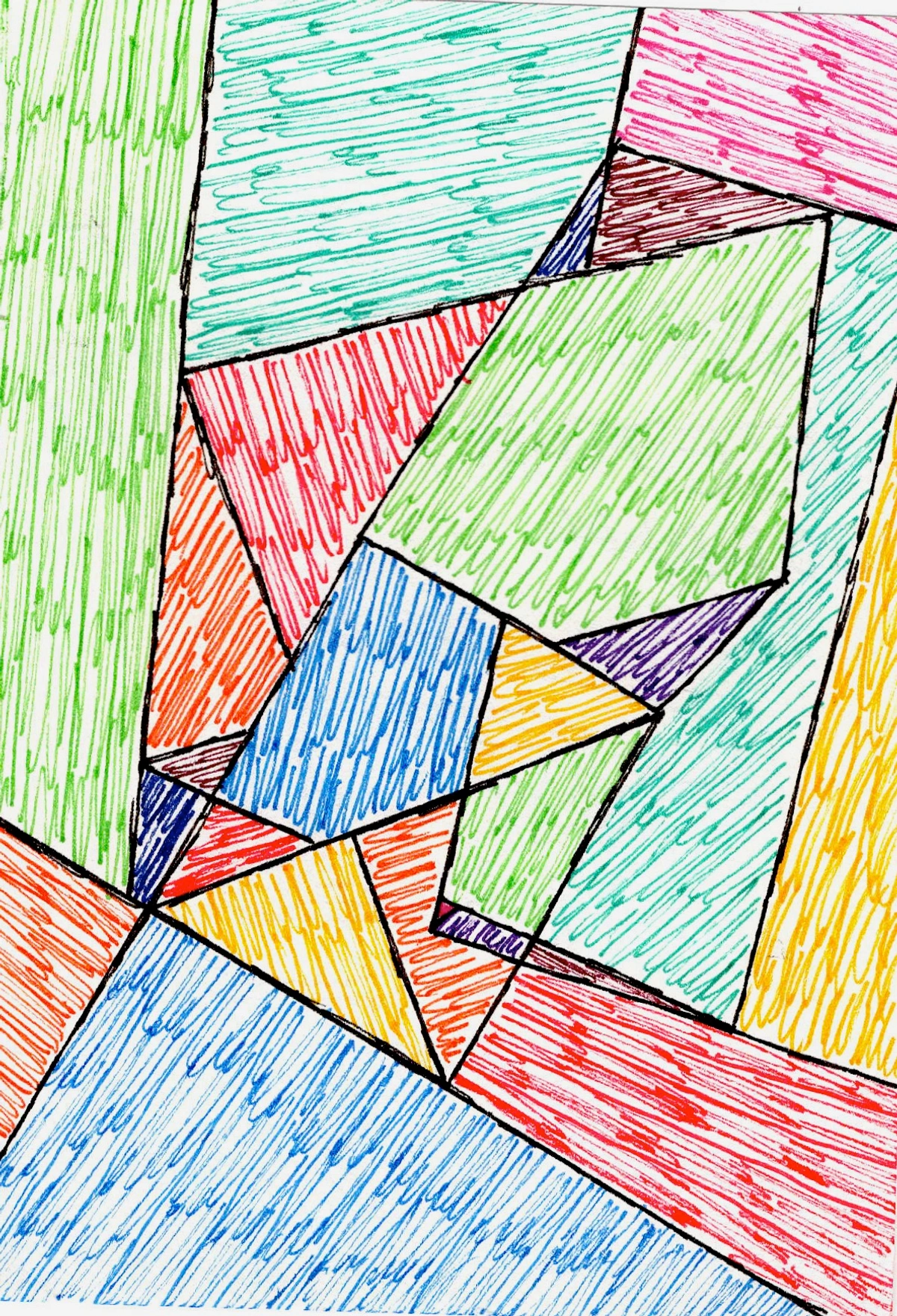
Thorough Research is Non-Negotiable: Make It Easy for Them to Say 'Yes'
Remember that faux pas I mentioned? It usually stems from not doing your homework. You must conduct extensive research to identify galleries whose curatorial focus, existing artist roster, and exhibition history genuinely align with your own artistic practice. This demonstrates profound respect for the gallery's vision and significantly increases the likelihood of a positive reception. Understanding abstraction in contemporary art can further refine this targeting, helping you speak the gallery's language.
Beyond their website, delve into art publications, follow their social media, and attend their openings if possible. Pay keen attention to the types of artists they represent—are they emerging, mid-career, or established? Do they focus on a particular medium, style, or conceptual theme? This level of detail shows that you are not merely mass-emailing, but thoughtfully engaging with the gallery's program. A crucial tip: checking a gallery's current exhibition schedule and recent acquisitions can show genuine interest and that you are paying attention, potentially sparking a more tailored conversation. Also, if publicly available or inferable, trying to get a sense of the gallery's past sales or typical price points for artists at a similar career stage demonstrates market awareness and shows due diligence. Furthermore, actively seeking galleries that have recently diversified their roster or shown an interest in new talent can provide a strategic advantage. It's also smart to consider their clientele – who typically buys from them? Knowing this helps you understand if your work, and its price point, would genuinely resonate with their audience. It's about finding your tribe, not just any gallery.
Adhering to Submission Guidelines: The Golden Rule
Every gallery has its own submission policy, and you must meticulously follow these guidelines, whether it's through a formal submission period, an online portal, or a preference for introductions via mutual contacts. Ignoring these instructions is a surefire way to have a submission overlooked or, worse, completely dismissed. Make it easy for them to say 'yes' by following their guidelines meticulously. If a gallery doesn't have clear guidelines, a polite inquiry via their general contact email, asking about their preferred submission method, is a professional first step. It shows respect for their process. This isn't just about playing by the rules; it's about demonstrating you understand how the professional art world operates.
The Initial Contact: Professionalism and Brevity
When permitted, an initial contact, typically via email, should be concise and professional. It should include a brief, compelling introduction to you and your work, along with a direct link to your website or digital portfolio. Expressing genuine admiration for the gallery's program or a specific exhibition can establish a respectful tone. Only attach a few high-quality images if explicitly requested, as large attachments can be cumbersome. Considering the sheer volume of their inbox, the objective is to make your presence felt respectfully, like a polite, interesting whisper amidst the noise. I often consider what will make my brief introduction stand out in a sea of emails – usually, it's genuine enthusiasm backed by solid, well-presented work. Avoid the generic; make it personal, make it memorable, and make it easy to follow up on.
Persistence, Professionalism, and Patience: It's a Marathon, Not a Sprint
The path to gallery representation is, more often than not, a marathon, not a sprint. It is a lengthy process and often fraught with challenges. Sustained effort and a resilient mindset are absolutely crucial. Trust me, I've had my fair share of radio silence and polite rejections that sting a little, making me wonder if I should just pack it all in and take up competitive napping. But I've learned that these moments aren't personal affronts. They're usually indications of a current mismatch, an overwhelming queue, or simply busy schedules. It is rarely about you, personally; it's just the business of art, which can be brutal sometimes, but you have to keep going. Resilience isn't just a buzzword here; it's a superpower.
Follow-Up, Thoughtfully
If a gallery expresses interest or indicates they will review submissions, a polite, concise follow-up email after a reasonable waiting period is appropriate. A common practice is to wait two to four weeks, sometimes a little longer if the gallery is particularly busy, before considering a follow-up. Aggressive or demanding communication should be avoided at all costs, as this can instantly undermine any professionalism established. Patience, as the adage goes, is indeed a virtue here. Think of it as planting a seed; you check on it, but you don't dig it up every day.
Learning from Rejection (or Silence)
Rejection or a lack of response is an inevitable part of the art world. Rather than viewing it as a personal failing, use it as an opportunity to refine your work, strengthen your portfolio, and expand your search to other suitable galleries. After a few polite nudges and no response, it's often best to gracefully move on and refocus energy elsewhere. It's not personal; it's simply business, or sometimes, a very, very busy inbox. However, if a rapport has been developed, a polite, brief email requesting feedback (emphasizing it's for learning, not a demand for justification) can occasionally provide invaluable insights, though many galleries may not have the time. And remember, maintaining professional relationships, even with galleries that don't offer immediate representation, can open doors in the future; connections often lead to other opportunities in unexpected ways. It's all part of the long, often twisty, journey of being an artist. Don't let a 'no' stop your 'yes' to your own career.
Understanding Gallery Contracts and Agreements: Protecting Your Vision
This phase delves into the commercial realities of the art world, where contracts, exclusivity, and commissions become central. Many artists find navigating these business aspects uncomfortable, but understanding them is absolutely crucial. I remember my first contract felt like deciphering an ancient scroll, full of legal speak and tiny print. When a gallery expresses serious interest, they will discuss these terms. It's vital for you to understand what you are agreeing to:
- Exclusivity clauses: Determining if your work can be shown elsewhere or sold directly.
- Commission structures: The percentage the gallery takes, typically 40-60%. For example, a 50/50 commission split is common for established artists, while emerging artists might see 40/60 in favor of the gallery.
- Duration of the contract: How long the agreement lasts.
- Consignment periods: How long the gallery holds the artwork before an exhibition or sale. This period needs to be clearly defined.
- Insurance: Crucial for artworks while they are in the gallery's possession. Always clarify this.
- Shipping logistics: Who covers the costs and responsibilities for transporting art to and from exhibitions.
- Marketing and promotion: Clarify who handles social media, press releases, newsletters, private view invitations for exhibitions.
- Intellectual property rights: Who owns the reproduction rights to the artwork. (Hint: it should always be you, the artist!)
- Unsold inventory: What happens to unsold work once the consignment period ends? Is it returned promptly, or does the gallery have a right to continue representing it under specific terms? This is a common point of contention, so get it in writing.
Don't hesitate to ask questions or, even better, seek legal advice. A strong partnership, after all, is built on clear understanding and mutual respect. These details may seem tedious, but they protect both you and the gallery, setting the stage for a smooth, transparent relationship. I always consider what elements of a contract are most important to my peace of mind before signing.
The Long Game: An Evolving Landscape of Representation
Building a successful artistic career, especially one supported by galleries, is a marathon, not a sprint. It demands consistency in artistic practice, continuous professional development, and persistent, thoughtful outreach. It's easy to get caught up in the current gallery system, thinking it has always been this way. But the very idea of an artist's gallery wasn't always this structured. Historically, ancient Greece had patrons commissioning works directly, and medieval guilds regulated artistic production. The Renaissance saw the rise of individual patrons like the Medicis, who were more like benevolent sponsors than commercial agents. The modern gallery model as it is known today, with its structured representation and exhibition schedules, truly began to solidify in the 19th and 20th centuries, shifting from informal salons and direct artist-patron relationships to formal commercial spaces. This historical evolution reminds us that the art world is always changing. The rise of online galleries and hybrid models further exemplifies this ongoing evolution, offering new avenues for representation and sales that artists should absolutely explore alongside traditional brick-and-mortar spaces. My own timeline will undoubtedly reveal a trajectory of sustained effort and evolution, emphasizing that success is a cumulative result of dedicated work over time. Perhaps someday my work will find its place in a prestigious institution, akin to an artist's museum in 's-Hertogenbosch, but that's a story for another day. For now, focus on your next step, your next piece, your next connection.
Frequently Asked Questions: Practical Answers for Artists
Alright, let’s tackle some of those burning questions that often keep us artists up at night. These are the practical bits that everyone wonders about, but sometimes feels too shy to ask.
Q: So, you're wondering about the magic number of pieces for your portfolio?
A: Generally, a curated selection of 10-20 strong, cohesive pieces from a single body of work is recommended. Quality always triumphs over quantity; no gallerist wishes to wade through every piece you've ever created. Show your best, and demonstrate a clear vision. Think of it as a highlight reel, not the full documentary.
Q: Should prices be included in initial outreach?
A: Generally, no. Prices are typically discussed once a gallery expresses serious interest. For an online portfolio, indicating "price upon request" is perfectly acceptable. Maintain professionalism and let the art speak first. It's like a first date – you don't ask about their salary immediately!
Q: How long should I wait before following up with a gallery?
A: A polite follow-up after 2-4 weeks is usually appropriate. However, if the gallery specified a different response time, you should absolutely adhere to that. If, after a polite follow-up or two, no response is received, it's often best to gracefully move on and focus energy elsewhere. Your time is valuable, and there are many other fish in the sea (or galleries in the art world).
Q: Is it acceptable to approach multiple galleries at once?
A: While some artists prefer to approach one at a time, it is generally acceptable to contact multiple galleries simultaneously. Transparency is key; if a gallery expresses strong interest or offers representation, you should inform other galleries you've approached that your work is under consideration elsewhere. This is about maintaining professionalism, not engaging in gamesmanship. Honesty really is the best policy here.
Q: What if a gallery is interested, but it doesn't feel like the right fit?
A: Trust your intuition. It's perfectly fine to politely decline an offer if the gallery's vision, contract terms, or artist roster don't align with your long-term goals. A 'no' now can save significant challenges later. Always express gratitude for their interest, and perhaps politely inquire about potential future collaborations or express admiration for other artists they represent. Maintaining a positive connection, even if an offer is declined, is always a strategic move. Ultimately, it's your career trajectory, and you're the CEO of it.
Q: How should I handle direct collector inquiries before and after formal gallery representation?
A: Before securing formal gallery representation, you should absolutely handle direct collector inquiries with professionalism. Provide clear information about available works, pricing (if comfortable), and shipping details. Should gallery representation later be secured, transparency with the gallery is paramount. Inform your gallery about any pre-existing client relationships or direct sales made prior to the contract. For future sales after representation, it's crucial to gracefully and politely redirect collectors to the gallery. This respects the gallery's role and agreement, ensuring harmonious collaboration and maintaining trust. It's all about building trust and defining clear boundaries for a harmonious partnership.
Q: How do commissions or custom work interact with gallery representation?
A: When represented by a gallery, any commission inquiries should typically be directed to the gallery. This ensures that all sales are handled through the established agreement, including commission splits. If you wish to take on private commissions outside the gallery's purview, this must be explicitly discussed and agreed upon in the representation contract to avoid conflicts. Clarity from the outset is vital. Always have that conversation before the commission comes knocking.
Q: What is the role of art fairs for an unrepresented artist, and how should I handle my personal brand on social media after securing representation?
A: Art fairs are often crucial platforms for galleries to showcase their artists to a global audience and generate sales. For an unrepresented artist, they are excellent for research and networking, as noted above. However, direct sales by an artist at a fair while also seeking gallery representation can be delicate due to exclusivity clauses. It's generally best to use fairs as a networking opportunity, identifying galleries whose aesthetic aligns with your work, rather than as a direct sales channel that might conflict with a potential gallery agreement. Some art fairs also have sections specifically for unrepresented artists, which can serve as a stepping stone. As for social media after representation, you should absolutely continue to cultivate your personal brand, but always be mindful of your agreement with the gallery. Many galleries appreciate artists who maintain an active online presence, but it’s crucial to discuss how you'll announce new works, exhibitions, or sales, ensuring you amplify the gallery's efforts and maintain a consistent message. Transparency is always key! It’s about working with your gallery, not against them, to build your collective success.
Conclusion: Your Vision, Professional Guidance, An Audience Awaits
Securing gallery representation is a demanding yet incredibly rewarding endeavor. It requires a blend of artistic excellence, shrewd strategic planning, and unwavering professionalism. From meticulously preparing a portfolio and cultivating a robust online presence to actively networking within the art community and approaching galleries with respect and a clear, personal vision, every single step builds towards that goal. The journey is often challenging, filled with its share of rejections and silent inboxes. Yet, every interaction, every 'no,' presents an opportunity to refine, adapt, and grow. It’s all part of your unique timeline as an artist, a story you are actively writing with every brushstroke and every email sent.
Remember, true success isn't solely about securing a spot in a gallery; it's about affirming your path, connecting with those who champion your vision, and ensuring your work reaches its rightful audience. Building a sustainable art career often involves a multifaceted approach, perhaps combining gallery sales of your larger, primary works with direct sales of smaller studies or prints from your website, alongside commissions or other revenue streams, ensuring long-term viability. Your art deserves to be seen, to spark conversation, to live beyond the studio walls. Embrace the process, and let your unique vision guide the journey. Keep creating, keep learning, and keep presenting your work to the world. A masterpiece awaits its audience, and with diligence and strategic effort, that audience can be found. You've got this.




